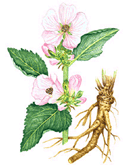
Dogwood
Introduction
This fact sheet provides basic information about Dogwood. Native to Central America, Florida, and the West Indies, dogwood (also known as Jamaican dogwood) has recently been found growing in areas such as Texas, Mexico, and the northern part of South America. Dogwood grows pods that are shaped by four projecting wings, yellow or grayish brown exterior bark and light colored inner surface that has an unpleasant smell. Jamaica dogwood is known for its markedly acrid and pungent taste, whose bitterness leaves the mouth with a distinct burning sensation.
Common Names
Dogwood, Jamaican dogwood
Latin Names
Piscidia erythrina
What It Is Used For
- Jamaica dogwood has been used primarily in connection with the following kinds of conditions: neuralgia, nervous debility, insomnia, migraines, dysmenorrhea (painful menstruation), violent toothaches, and whooping cough.
How It Is Used
- The medicinal part of the Jamaica dogwood plant is the bark.
- Dried root bark: 1 to 4 g (or equivalent in decoction) three times daily
- Fluid extract: (1:1 in 30 alcohol) 1 to 2 mL three times daily; or 2 to 8 mL per day (1:1 in 60 ethanol)
- Tincture (1:5 in 45 ethanol): 5 to 30 drops (1 to 2 mL) three times per day
What the Science Says
- It is important to note that there has been little to no scientific research on Jamaica dogwood, so the safety and effectiveness of this herb is relatively unknown. Jamaica dogwood is a potent herb and should be used only under the guidance of a qualified health care professional.
Side Effects and Cautions
- Jamaica dogwood as an herbal remedy is thought to relieve certain conditions; however it may have potential adverse side effects including gastric distress, nausea, and depression.
Sources







